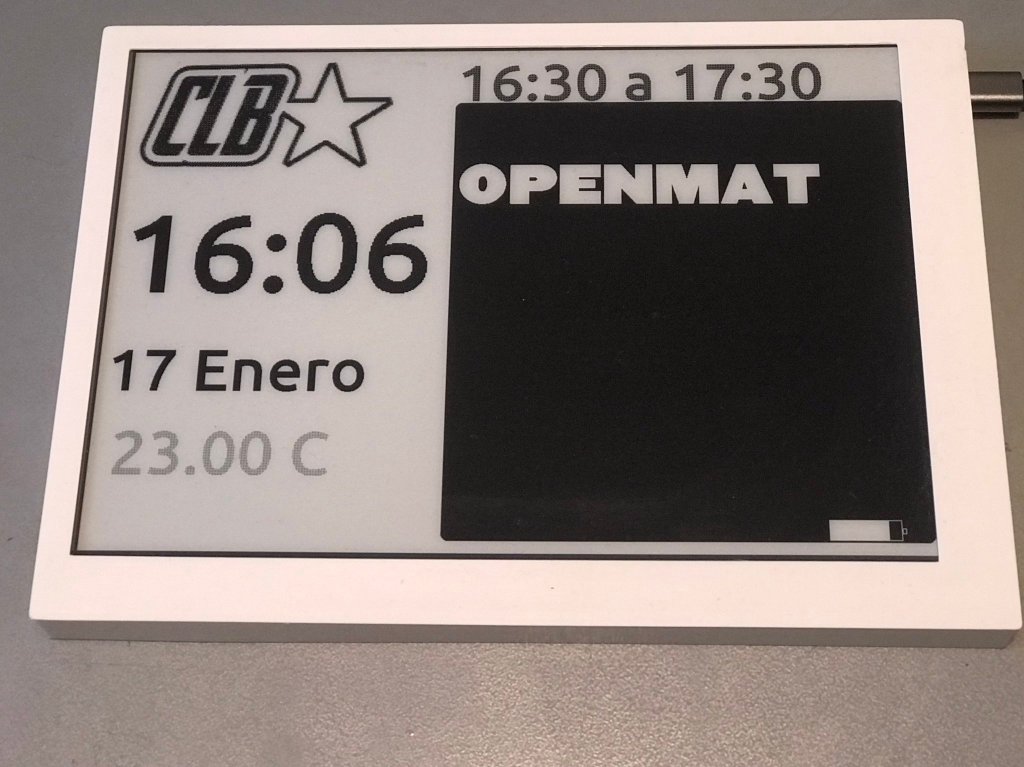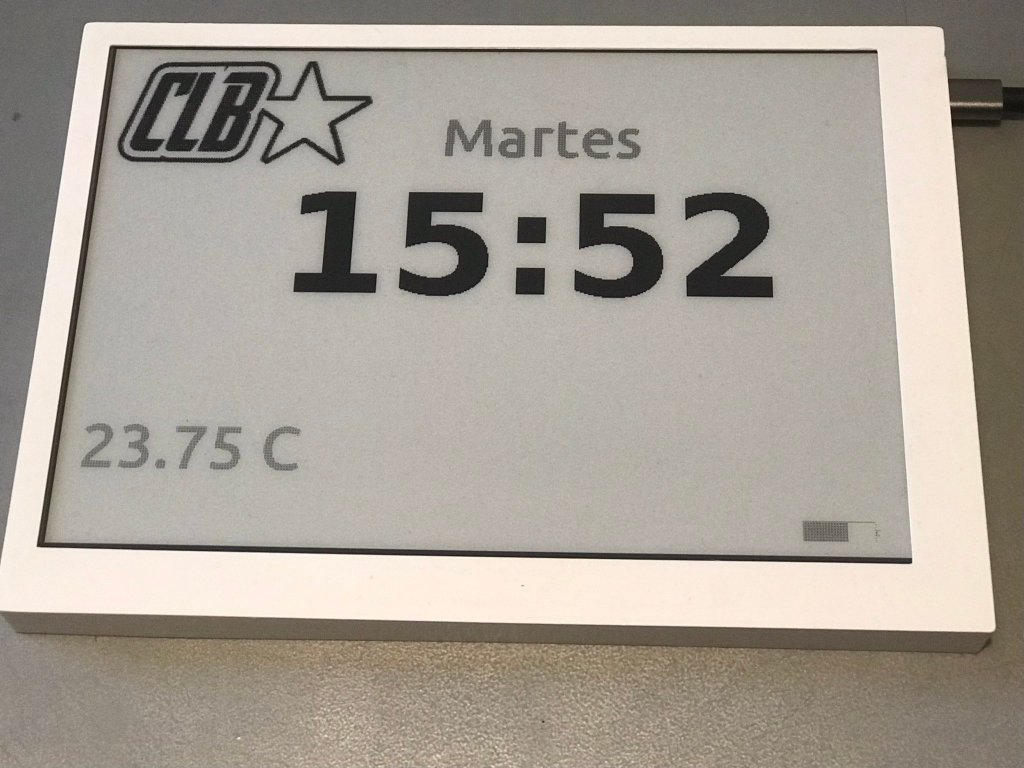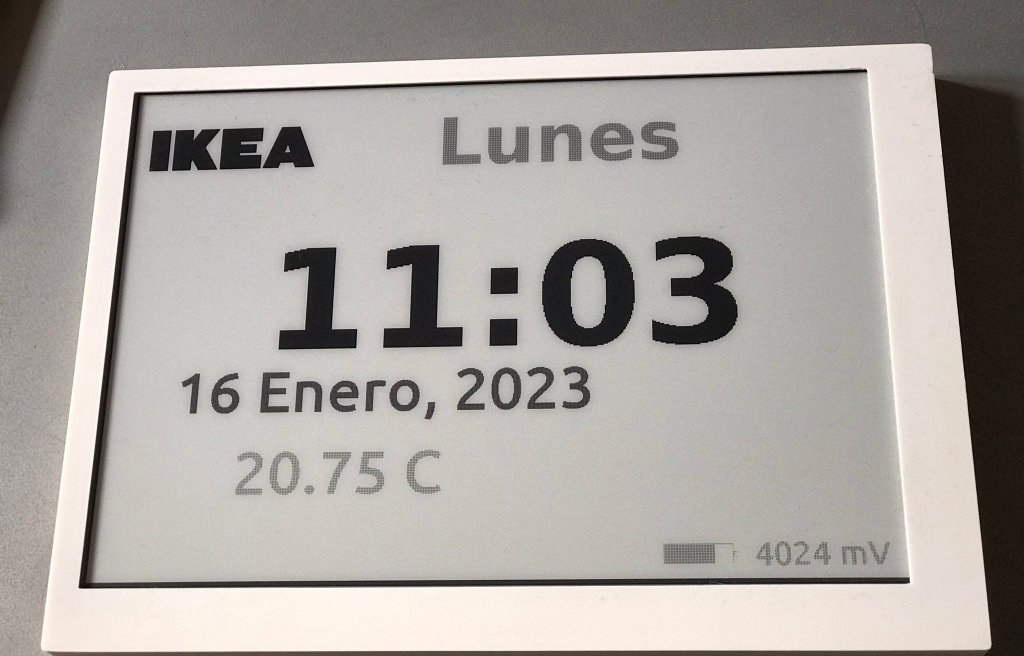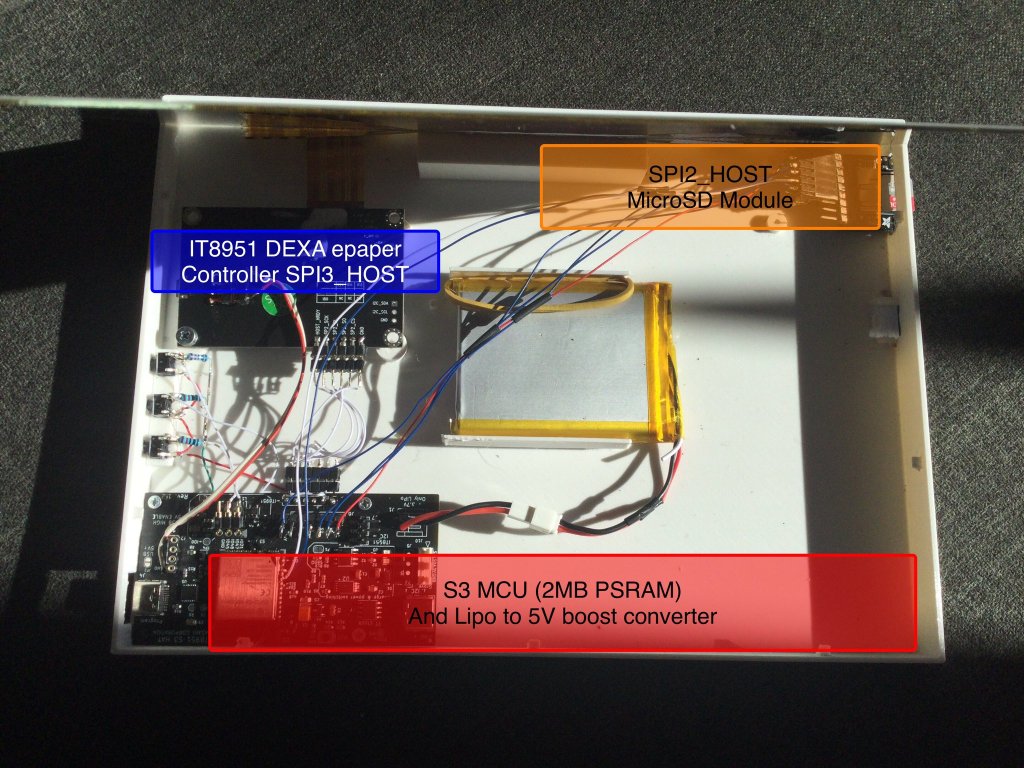This might be a continuation from the Cinwrite DEXA epaper controller that we designed just after partnering with Freddie from Good-Display.com
The idea is to prepare an open source Firmware that is ready to be used with different examples and two target controllers:
1 – DEXA-C097 from Good-Display needs additionally my Cinwrite ESP32-S3 SPI controller
Optionally any ESP32 board with an RTC connected via I2C
2 – EPDiy V5 codenamed “Inkster” that you can find in Tindie
Option 1: Fast update and proprietary Waveform
With this option we designed already some panels for stores but also a very fancy ebook reader with an extra SPI SD card from Adafruit.




We also sent proposals to make a Temperature / Humidity / CO2 level weather panel to Macba, CLB fight club Barcelona and others.
Sadly we hit the generic info email in Macba so no-one will reply to that when the proposal falls in the wrong hands.
Customizing of this Panels can be done with various sensors:
- Environamental like SCD40 / 41 Temperature, humidity
- Dust sensors
- Many others you can find in Sensirion catalog
Basically anything that can be plugged per I2C or SPI can be read. And the data results retrieved and converted in a format you like, using the fonts you desire, and any PNG icons or images of your choice. The possibilities are endless!
For the CLB club we are using RTC at it’s best. The fight club has an schedule that we converted to Vectors using C++. Then having the great possibility to be aware of time with our on board RTC we can just display the current activity as you can see in the photos.
So it’s not only a weather panel. It’s also showing what class is being instructed in the Gym.
Challenges: You need 2 boards the Cinread board and our own Cinwrite SPI master controller. They can be used together as a HAT (No cables around) But if you need a flat design like the ePub reader you need to wire 4 SPI cables together plus VCC and GND.
Contraindications: VCOM is slow to regulate to your desired voltage. Probably some mistake by CINREAD.com that is the factory for this controllers that are resold by GoodDisplay.
Our Cinwrite ESP32S3 PCB generates 5 Volts from the battery power (3.7 to 4.2 Volts when fully charged) so you have this issue already resolved if you use our controller and you also have RTC.

Option 2: EPDiy
EPDiy is our one board controller of choice since we discovered it 2 years ago. We collaborated in the repository adding “software Rotation” that is what Lilygo lacks in their own EPD47 repository since they are lazy enough not to use latest version of EPDiy.
We understand that because hardware sellers focus primarily in Harware but not specially in bringing dedicated Software support or answering every Issue in their repositories. But we are still very thankful that they got parallel communication working in ESP32S3 and that opens the path to EPDiy V7 with 16 data lines for more modern epaper displays.
We made already nice panels using EPDiy V5 called Inkster. Martin is a very cool maker from Czechia and he is also a very cool and handsome man ;)
Contraindications: The VCOM in this controllers needs to be regulated by hand using a Multimeter until you match the epaper Vcom voltage (If it’s somewhere on the display usually there is a small adhesive). This controller uses ESP32 and an open source Waveform and does not update as fast as Option 1.
Challenges: There are not more than 4 GPIOs available. You can’t just connect another SPI device if you use 1 for a button. You can connect an RTC killing 2 buttons and using them as I2C lines.